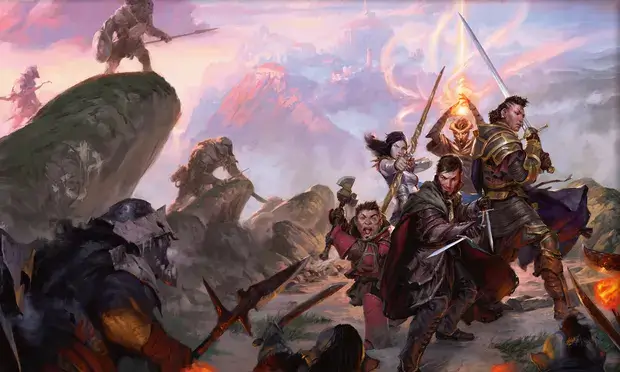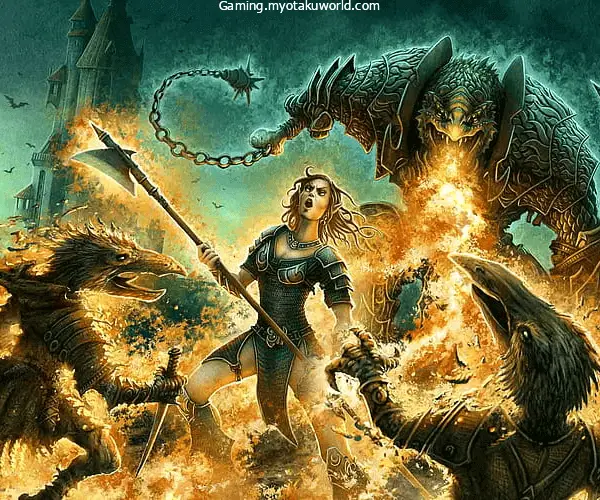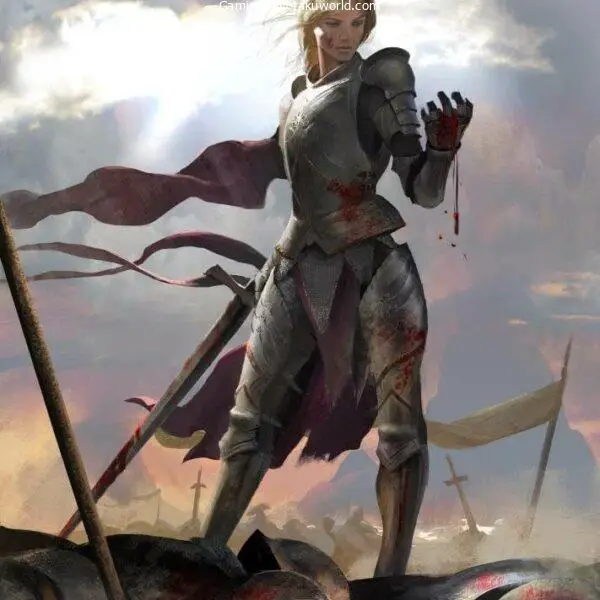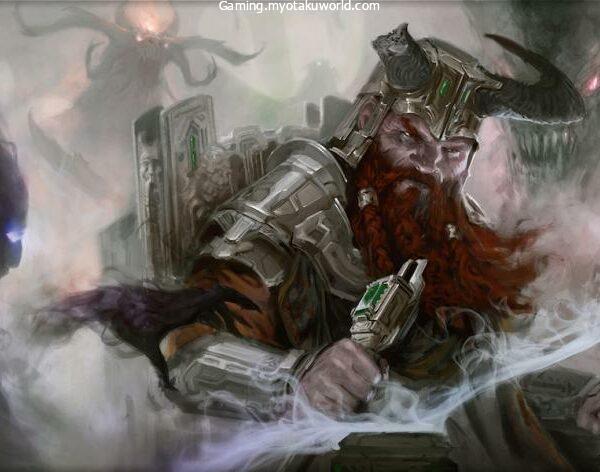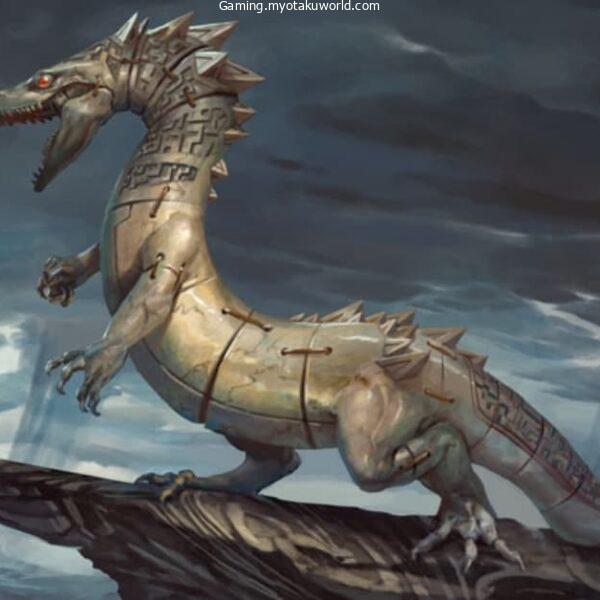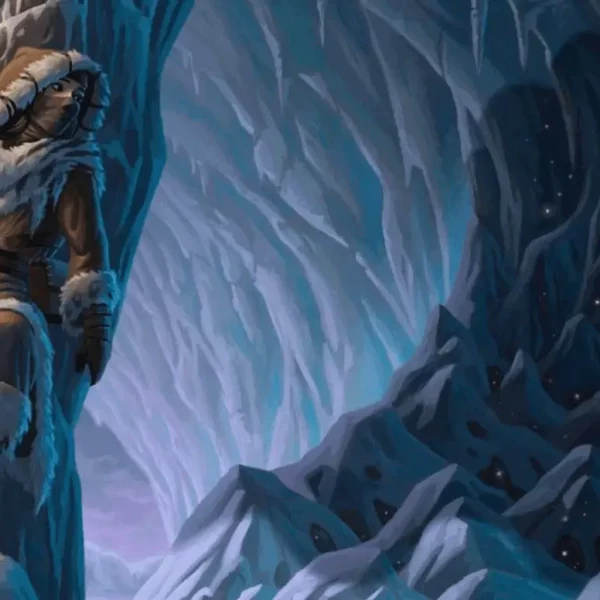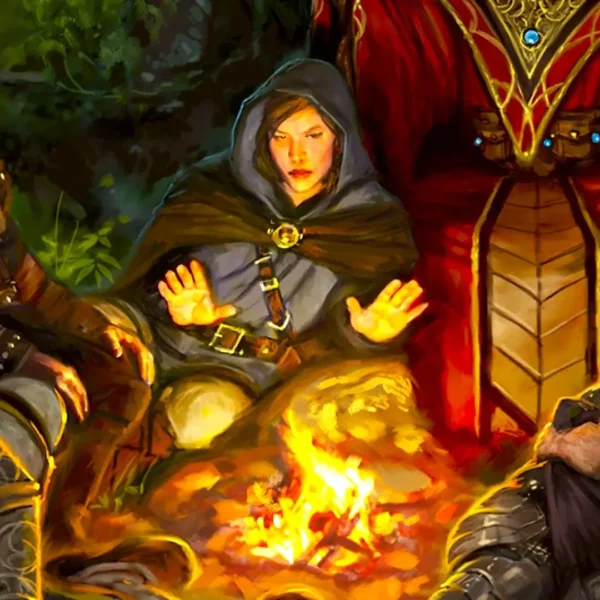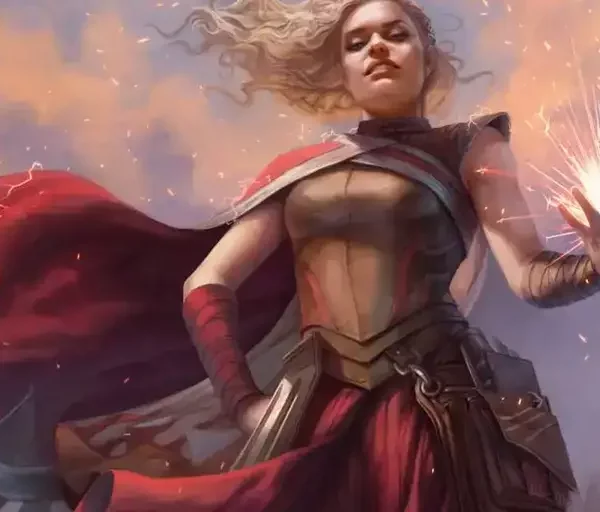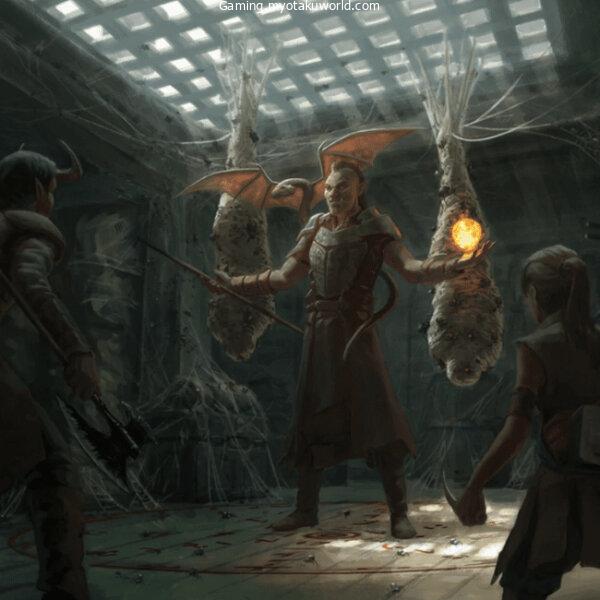You may have heard some of the many rumors about Dungeons and Dragons at one time or another. You may have read about the many controversies around it.
Maybe your friends are avid players and you want to try it out. But it can be addictive. No matter what the reason, we are here to tell you the truth about D&D.
Dungeons and Dragons might look and feel like fun and be fun to play, but the truth is that the game is very fun.
Yes, we know you heard it from us first. We won’t lie to you. D&D is a great way to make a habit of it, and you might never want to stop.
Why? It’s simply…amazing. Random. Unpredictable.
It is impossible to predict how any campaign will end. To find out, you need to roll at least one die (sometimes a 20-sided dice, other times just one type of dice) before you can find out if you have caused any critical damage.
D&D allows you to have complete control over your players, whether you are the Dungeon Master or not.
You can also send them to various traps and pits during gameplay before you give them the holy grail or whatever other end you choose.
You don’t have to stop playing if the DM tells you that you fell into a trap. You can still argue with them and offer a solution that you have in mind. They can let you go if they believe it is valid. It’s incredible!
However, playing is not fun if it’s difficult to learn how to play. Take a seat, grab a cup of coffee or your gaming drink, and settle in for a short read.
After this, you can spend hours slashing your swords or casting spells in the many D&D worlds. But first, before we dive in…
- What are the Worlds?
- Anatomy of a Dungeons and Dragons Game
- How to Play Dungeons and Dragons?
- Gameplay: The Power of Creativity, Imagination, and Creativity
- It’s not the end: Campaigns, Worlds, and Homebrews
- How to Choose the Best Handbooks and Supplements?
- Handbook for the Player
- Monster Manual
- Dungeon Master’s Guide
- FAQs
- What is a Percentile Throw?
- If I don’t have a complete dice set, can I use a random number generator?
- Can you play D&D with no dice or random number generators?
- What happens if I die in-game?
- What are the different editions?
- I have seen many other Handbooks and Supplementals. Are these books and supplements worth the money?
- Final Words
What are the Worlds?

To be completely honest, there is no such thing. D&D is more like a ruleset than a real world.
There are many species, races, creatures, and classes. But the D&D sets that you purchase from Wizards of the Coast or their retailers only contain a rulebook, some game basics, and a few rules.
When we refer to a “Dungeons & Dragons world”, we mean campaigns. These are pre-set rulesets and maps that have their history and lore. These are likely to be included in your D&D set. These can be written by the D&D team members or by fans.
We’ll only be covering the basic rules for this post. Modding and homebrewing are optional. These can be done later once you have mastered the game.
Anatomy of a Dungeons and Dragons Game

Let’s look at what makes this game fun. Dungeons and Dragons can be played between two and five players.
You can play it for as little as 10-20 minutes. You could drag it for years, as long you and your friends are willing to do it.
You Need These Things
Before you can play any D&D game, you need to have some basic tools.
- The Set Of Dice
- Character sheets
- Dungeon Master’s Notes
Let’s start with the basics. Why do we need a set? D&D uses seven dice to test for different sets of probabilities. You can use regular six-sided dice to check for change-related events, but only one in six.
The 20-sided dice make it possible to have a chance of something being thrown at you. Let’s get to the dice shortly.
The character sheets allow you to add information about your characters.
Simple. It’s that easy.
The players write their names, levels, aspirations, and any other details they have. It’s like an adventurer’s resume!
The Dungeon Master’s Notes should be the last. You can call this one the notes, even though it doesn’t have a name.
This is where the dungeon master (or DM) writes down things to keep track. DMs usually have a cover to keep other players from seeing what they are planning.
The Players
The game requires at most two players.
- The Dungeon Master
- The Other Player(s).
The Dungeon Masters act a bit like a narrating organ to the game. They don’t call themselves “players” per se. They tell what happens and when, and then announce to other players what happens next.
They plan the beginning, middle, and end of everything. They could be described as the “great force” driving the entire story.
The rest of the players, on the other hand, are just…players. They are the main characters in their adventures and find creative solutions to problems. Each player receives a character sheet that allows them to customize their characters.
A typical game will have one DM who pulls the strings and causes problems for the other players.
You can have more than one DM, especially in games that have five players or campaigns with separate routes. The DMs will direct the flow of the players.
How to Play Dungeons and Dragons?

Here’s how to play a simple D&D-style game. It’s important to keep in mind that not all D&D games play the same. They are unique because of their human creativity.
Start Out: Adventures
The adventure is a single session of D&D gaming. The DM is a referee-narrator hybrid who prepares the adventure for everyone.
They assist players in creating their characters and review the character sheets of those who wish to reuse the ones they have already created.
Create a new character: Character sheets and classes
Playing with a new character is the goal. You’ll need a blank character sheet for this game. Each D&D kit comes with its copy. However, some players prefer custom sheets because they are more practical.
The rules apply regardless of whether you are using an official or fan-made sheet. These six things are essential to your character.
- Race
- Classes
- Ability Scores
- Backstory
- Equipment
- Roll
The race of a character tells you a lot about their capabilities and limitations. Halflings excel at stealthy and nimbleness.
They won’t be able to carry large boulders like Dragonborns and half-orcs. It’s also something you cannot change throughout an adventure, except if you are reincarnated.
Classes are, however, similar to jobs. Any job is possible. Halflings can become barbarians if they work hard enough. They could be able to carry more boulders than the typical Dragonborn if they try hard enough. You can even have multiple classes, unlike other races!
You can use their ability scores to determine how competent your character is at doing something. These numbers and traits are simply indicators of a character’s strength and dexterity as well as their constitution, intelligence, wisdom, and charisma.
Your backstory can help others get to know you better. This is more user-friendly than the usual numbers associated with ability scores. You can also write the history of a character you are importing from another game.
Everybody needs equipment to do stuff. This is doubly true in adventure. The gold or set of items they need to complete their backstory is usually given to new adventurers.
As if you were a soldier you would probably have the same stuff soldiers need.
Your role is what determines your contribution to the team. You might be wondering which team you are part of.
It’s your team with other players. Your DM will let you know if you have met other players in-game or if this is a random encounter.
Gameplay: The Power of Creativity, Imagination, and Creativity

Now you have probably created a character from scratch. This is where the real fun begins.
The DM is the one who narrates what happens in-game. Adventures start with this. The narration continues until the end of the game.
The DM will present challenges and problems to players. The players have the option to be creative in their solutions.
The DM tells you that you are about to fight against a goblin. You could choose to fight or run. Fight or capture the goblin and possibly do some goblin interrogation.
You can do it all. The DM does not have to give you the answers. Ask the DM if he would allow you to do it.
Everything is possible with D&D as long as it’s allowed by the DM. An ice spell can freeze a lake or set fire to a forest using a series of fireballs.
If the DM disallows something, they will have to give a reason. You can use your imagination!
Calculating Success: The Dice
You thought you could free another player from a rope using Fireball. Make sure to aim at the rope, not their skin. You made a good choice. Like in real life, great ideas can be disastrously discarded. It’s only one of two.
It’s the DM’s responsibility to make it happen. They use dice rolls when they allow something to happen.
In our case, the DM may ask the player to roll a D20 (or 20-sided) to determine if the fireball hits the spot. The DM will also ask the player to choose a number or range that they want to aim for. If it lands on this number, the move succeeded. It didn’t work otherwise.
DMs use dice systems to avoid having to constantly guess and compute numbers. These are not things you will need to know as a beginner D&D player. These are always up to the DM.
Six types of dice are used by D&D players. These are the:
- D4
- D6
- D8
- D10
- D12
- D20
A majority of dice sets include a second D10, which is used to make percentile throws. One D10 is 10, 20, 30, etc., which represents the tens digits in a number from 00 to 100.
If you roll to 00 and a 1, it means that you rolled to 1. If you rolled to 00 or a 1, you rolled up to 1.
Get there with Abilities Scores
Your skillful dice throwing and intelligence and wisdom statistics allowed you to hit the rope at just the right angle. Your friend was not hurt and you singed the rope enough to cause it to break. That’s good. But what does that mean?
Your stats and ability scores are indicators of how well you do certain things in D&D. Intelligence is a measure of your character’s ability to think and remember.
A human with a low intelligence level won’t be able to read a book as well as an ogre mage.
Others measure their abilities. Wisdom, for example, measures your ability to see the bigger picture and be in touch with your environment. Imagine a wizard with high intelligence walking into a trap. This is an example of a low-wisdom person.
Charisma is a key ingredient in being well-known and persuasive. It’s a trait that politicians possess. It is also a common trait among merchants. Nobles likely have it. We all know bards do it.
You can con anyone with your charm and charisma. However, that doesn’t mean that you will always escape the situation alive.
You might find yourself unlucky if you run away with dexterity. You could run fast, dodge attacks, and even hit the bullseye with a bow.
For those who are prone to be beaten, the constitution is the best. A higher constitution gives you more hit points, toughness, and resistance. This allows you to sustain more hits so that your party members can hit harder and you take in the damage.
Strength is a powerful tool that allows you to deal more damage. This spell is useful for pack mules and close-range damage dealers. You read that correctly. Your strength will determine how many pieces of equipment you can safely carry.
Moving around the Battlefield: Going Through the Brush

Now you’re ready to learn more about the combat system. D&D is a turn-based combat system. This means everyone takes turns doing what they do.
Imagine a chess match with 3 to 5 players and a few enemy players controlled by a DM. The DM is just playing with the other players. This is how it works.
Every battle is fought using a map. The DM determines the map to use, as usual. All maps have the same format, with terrain and obstacles that mix it all up. Some maps have rivers that you would have to cross. Some have corridors and furniture scattered about.
No matter what map you are playing with, you can rest assured that you will not fight any map without obstacles. Unless you are told otherwise by the DM.
As you interact with the world around you, each turn will allow you to move around the map. Each step is usually 1 foot in length. One square equals one foot. Forests, for example, require an additional foot of movement.
Your movement could be slowed down. A fast-moving character can only use 8 feet of movement to reach an enemy and attack it, while the rest of their movement is used to move away.
Fight for all it’s worth
D&D’s combat system, like any other game that involves fights and battles, uses hitpoint to determine whether you are still alive after a hit.
Other than being based on your constitution stat, many other things can increase your hit points. There are many ways to increase your hit points. Equipment, spells, and ability bonuses are just a few examples.
It is easy to attack an enemy. It is easy to attack an enemy.
The target could be anything from non-enemy items to the ground, but whatever you use to attack it should be spells or weapons.
The attack roll, or die roll, tells you if you have hit the target and how much damage was done. While breaking doors doesn’t require accuracy, you will need it if you want to hit a goblin.
Other rules can tell you how much damage you did to an attack roll. There are many things to consider, including spells, weapons, and armor types. The good news is that your DM will inform you about it.
You’ll eventually be able to recall all the spell effects you use and the classifications they have. For now, you can just remember that an iron blade hits harder than a wood stick. This is true in both real life and online.
Another thing to keep in mind: certain skills allow you to save throws. If you make a bad throw, you can reroll your throw. If you get a 4 on a D20 asking you to throw at least 10, you can reroll your throw and score a 10 or higher.
It’s not the end: Campaigns, Worlds, and Homebrews

Once you have saved the world or captured the evil…whatever evil it is that you are trying to catch, it is time to say goodbye! It’s not true.
You can reuse the same character from different games. You can also make your own rules if you get bored of the default settings. You could also download homebrews from other people.
Homebrews can be described as homemade games that have their own rules and settings. You don’t have to make them at home. They can be made anywhere.
However, a beginner D&D player shouldn’t make one. This is just an example of something that a beginner might encounter when discussing D&D with their friends.
Fan-made campaigns are also available for longer games. These campaigns usually last for several sessions with the DM keeping track.
A typical campaign can last anywhere from a few months to several years. It all depends on the goals of everyone. It should be agreed upon by both the DM and players.
How to Choose the Best Handbooks and Supplements?
Perhaps you’d like to have a deeper understanding of how the game works. Maybe you are interested in being a DM. Perhaps you’re interested in learning the goal to have better gameplay.
Three official rulebooks are available for regular D&D. They provide all the information you need about the game.
- Handbook for the Player
- Monster Manual
- Dungeon Master’s Guide
These are not necessary. If you play games online or in pubs, you may want to use the official rulesets. You might also gain insight that could help you create better characters.
There are other official rules that you may want to read. They have not required readings. These are great sources for further reading.
Handbook for the Player

Pros
- The focus is on character creation
- Basic D&D Information
- This section contains spell lists and classifications of weapons and armors.
Cons
- The really heavy take
- This contains only the most essential stuff
The Player’s Handbook contains the most comprehensive “basic” D&D rulebook. It includes detailed descriptions of every weapon, spell, and armor you’ll ever use in vanilla D&D games.
The Player’s Handbook is huge, but it doesn’t cover every detail you’ll need. Other supplemental materials will be needed for this. D&D is so complicated that even a large take can still be too big.
Monster Manual

Pros
- This book contains monster lore about a variety of monsters
- Fighting statistics
- Beautiful artwork
Cons
- Information about monsters is the only thing that this site contains.
- You could still find more information on over 400 pages
The Monster Manual can be described as exactly what it is. The book has a lot of monsters, so DMs don’t have to limit themselves to the same old goblins that they throw at players every single game.
Although this manual is supplementary for DMs, it can still be useful for players looking for something to feed their imaginations.
Dungeon Master’s Guide

Pros
- Guides for world-building
- This section contains tips and tricks to help budding DMs
- Addition of optional game rules
Cons
- It’s a little too simple
Become a DM, it doesn’t require much. It doesn’t take much to become a DM. All you need is some knowledge and story-telling skills. The Dungeon Master’s Guide will guide you.
The guide contains everything you need about being a DM. This book covers everything you need to know about DMing.
FAQs
What is a Percentile Throw?
Percentile throws can be made with a pair of D10s. One of these numbers has two-digit numbers, the other one has one. To get the final value, you just need to add both numbers.Remember that percentile throws do not have a zero value. A throw that has a 00 or 0 indicates you have a 100.
If I don’t have a complete dice set, can I use a random number generator?
Although the DM has the final say, it’s okay to use a random number generator for D&D. If you don’t own a D6, some people could use a six-sided pencil.
Can you play D&D with no dice or random number generators?
This does remove the element of randomness from the game. However, you can still play the game with dice and random number generators.The DM will need to come up with a new way to make the game more fun or it could become roleplaying chess.
What happens if I die in-game?
It all depends on the DM. If they do not want to follow the original lore, their souls will be taken to the fugue plane and brought until the tenth day.This is unless you have been revived or tempted to greater power by devils. This means that you can’t usually go back to your former life without another person reviving it.
What are the different editions?
While the core game features have not changed much over time, the player base has certainly changed. Many people have grown tired of the original settings, and made so many fun changes, that other players started to follow their lead.New people will need to start somewhere. It’s better to let them learn from the best.
I have seen many other Handbooks and Supplementals. Are these books and supplements worth the money?
D&D is known for its many popular campaigns. Many handbooks and supplementals that you would see are specifically for campaigns with their own rules and legends.Although they aren’t a problem to buy, it’s better to stick with the original for beginners. You should only buy the supplemental items when you are ready to play other campaigns with other players.
Final Words
Dungeons and Dragons can be a deep, complex, and fun game. The game has more rules than you can fit in a book.
Don’t worry about every little detail. D&D is an imaginative game that encourages creativity and imagination. There is a vast world that you could explore if you can think.
Although this guide is not a complete explanation of all the rules, we hope you have enough information to be able to grab a set of dice and head to your local game bar!
